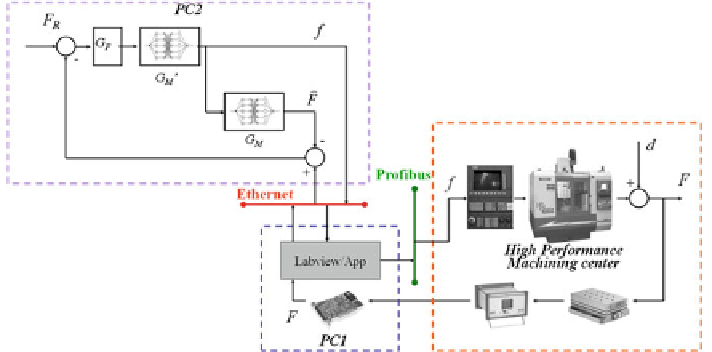Information Technology Reference
In-Depth Information
Fig. 7.7
Control architecture based on fuzzy and neurofuzzy systems implemented in a real-world
process
7.5.1 Tuning by Learning of Neurofuzzy Systems
This section presents the design and application of a transductive neuro-fuzzy infer-
ence method to control force in a high-performance drilling process. The main goal
is to study, analyze, and verify the behaviour of a transductive neuro-fuzzy inference
system for controling this complex process, specifically addressing the dynamic
modeling, computational efficiency, and viability of the real-time application of this
algorithm as well as assessing the topology of the neuro-fuzzy system (e.g., num-
ber of clusters, number of rules). A transductive reasoning method is used to create
local neuro-fuzzy models for each input/output data set in a case study. The direct
and inverse dynamics of a complex process are modeled using this strategy. The
synergies among fuzzy, neural, and transductive strategies are then exploited to deal
with process complexity and uncertainty through the application of the neuro-fuzzy
models within an internal model control (IMC) scheme.
The training data were obtained from real drilling operations of steel 17-4 PH,
which is a chromium-copper precipitation hardening stainless steel that provides an
outstanding combination of high strength, good corrosion resistance, good mechani-
cal properties and good toughness in both base metal and welds. This versatile mate-
rial is widely used in offshore (foils, helicopter deck platforms), aerospace (e.g.,
turbine blades) and nuclear waste casks. It is worth noting that the training data set
does not have to be very extensive. Only representative values of each operating
region are sufficient. The accuracy depends on the choice of certain parameters of
the TNFIS algorithm, such as the number of closest neighbors, the maximum num-
ber of iterations and the learning rate of the back-propagation algorithm, and the
set-clustering threshold value (a parameter of the clustering algorithm used). When

Search WWH ::

Custom Search